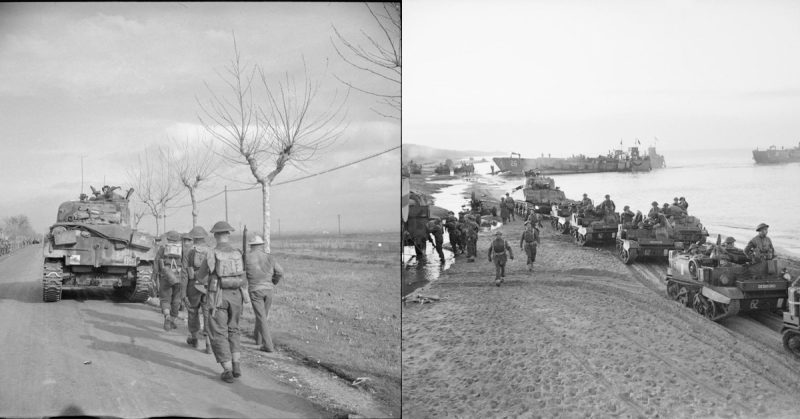A group of British soldiers referred to themselves as the “D-Day Dodgers” because they did not participate in the landings at Normandy in 1944. Instead, they were serving in Italy.
But don’t think that this means that they had an easy time of it.
The British sense of humor led them to compose their own ballad:
“We’re the D-Day Dodgers out in Italy – Always on the vino, always on the spree.
Eight Army scroungers and their tanks. We live in Rome – among the Yanks,
We are the D-Day Dodgers, over here in Italy.”
In reality, Italy was not an easy ride. Maybe compared to storming the beaches under heavy machine gun fire without cover, maybe then it seems easier. But comparing the two campaigns is a futile effort.
The way the battle unfolded in Italy was completely different from Europe. The “D-Day Dodgers”, working with the Americans and others, had been part of a 23-month campaign to head up the Italian peninsula and draw German troops away from Russia and France.
After defeating the Germans in Africa, the campaign got underway in July of 1943. They started by launching an airborne and amphibious assault on Sicily. Once Sicily was captured, it was the launching point to take the mainland.
The battle started well. Mussolini was deposed on July 25th and the Italian government formally surrendered in early September. The German forces remained, however, and they continued to fight.
On September 9th, 1943, 70,000 Allied soldiers took back Salerno. On October 1st, Naples fell to the Allies. From there they traveled through minefields and mountain passes without cover.
The Allies reached Cassino by January 1944. As they fought through the town, the American 34th Division took 80% casualties. They finally reached a monastery on a mountain overrun with German troops. It took months for the Allies to conquer the nearly impregnable defenses and claim the mountain.
They then moved on to Rome in June 1944 and fought through the Gothic line. They had to stop fighting finally due to the harsh winter. Fighting recommenced in the spring of 1945.
In the meantime, Mussolini had been rescued by Hitler and was to be made the dictator of what was left of Axis-controlled Italy. Italians captured Mussolini again, though – this time, he was killed and his body hung for display in Milan.
Churchill saw the fighting in Africa and Italy as a chance to weaken the Axis forces by hitting them where they were soft before taking on the harder Atlantic Wall in the north of France. It turned out that Operation Overlord in France cost 225,000 Allied casualties while the Italian Campaign suffered over 300,000 casualties.
So don’t let the modesty of the D-Day Dodgers fool you. The D-Day landings should not overshadow the hard work and sacrifice of these brave men who fought in Africa and Italy.
